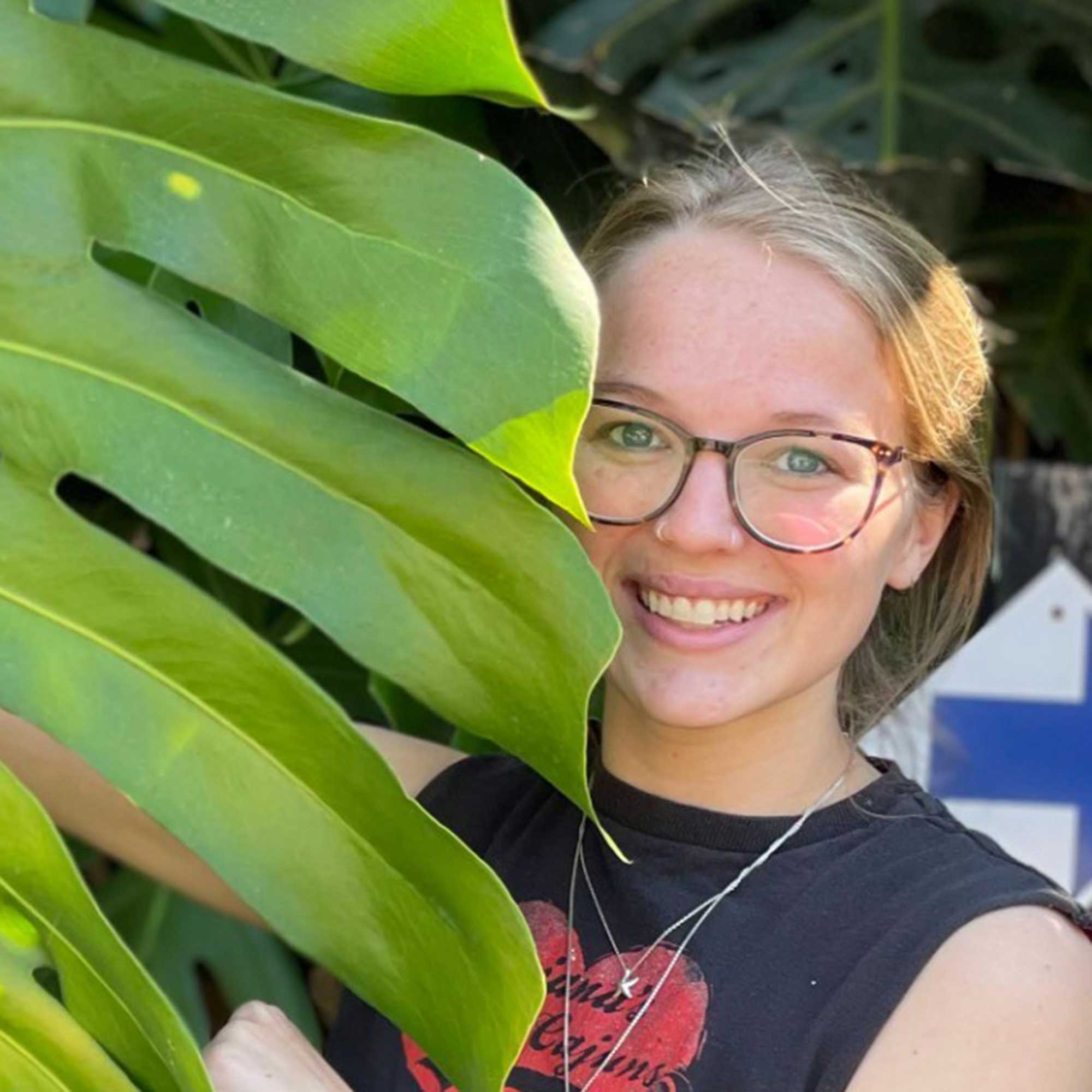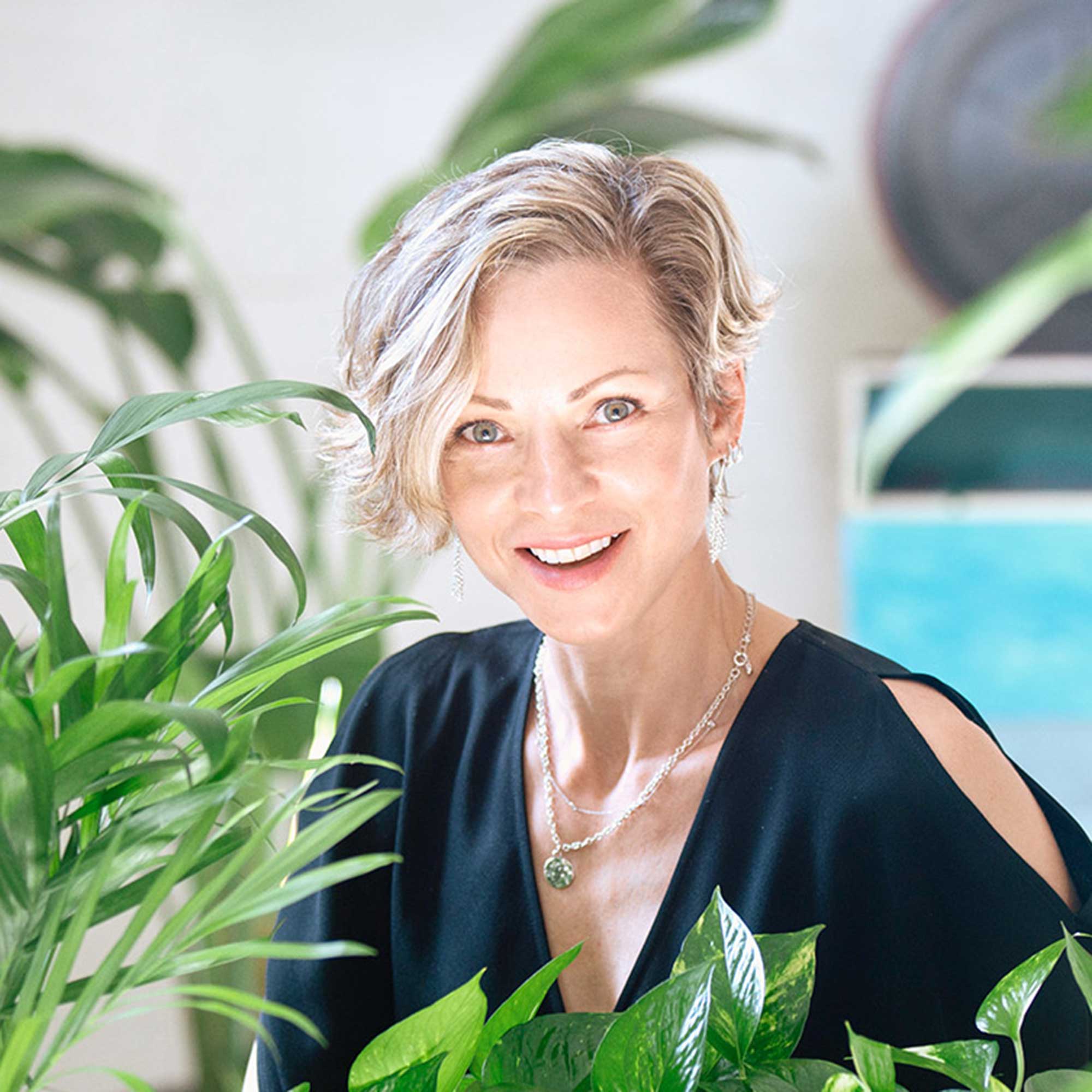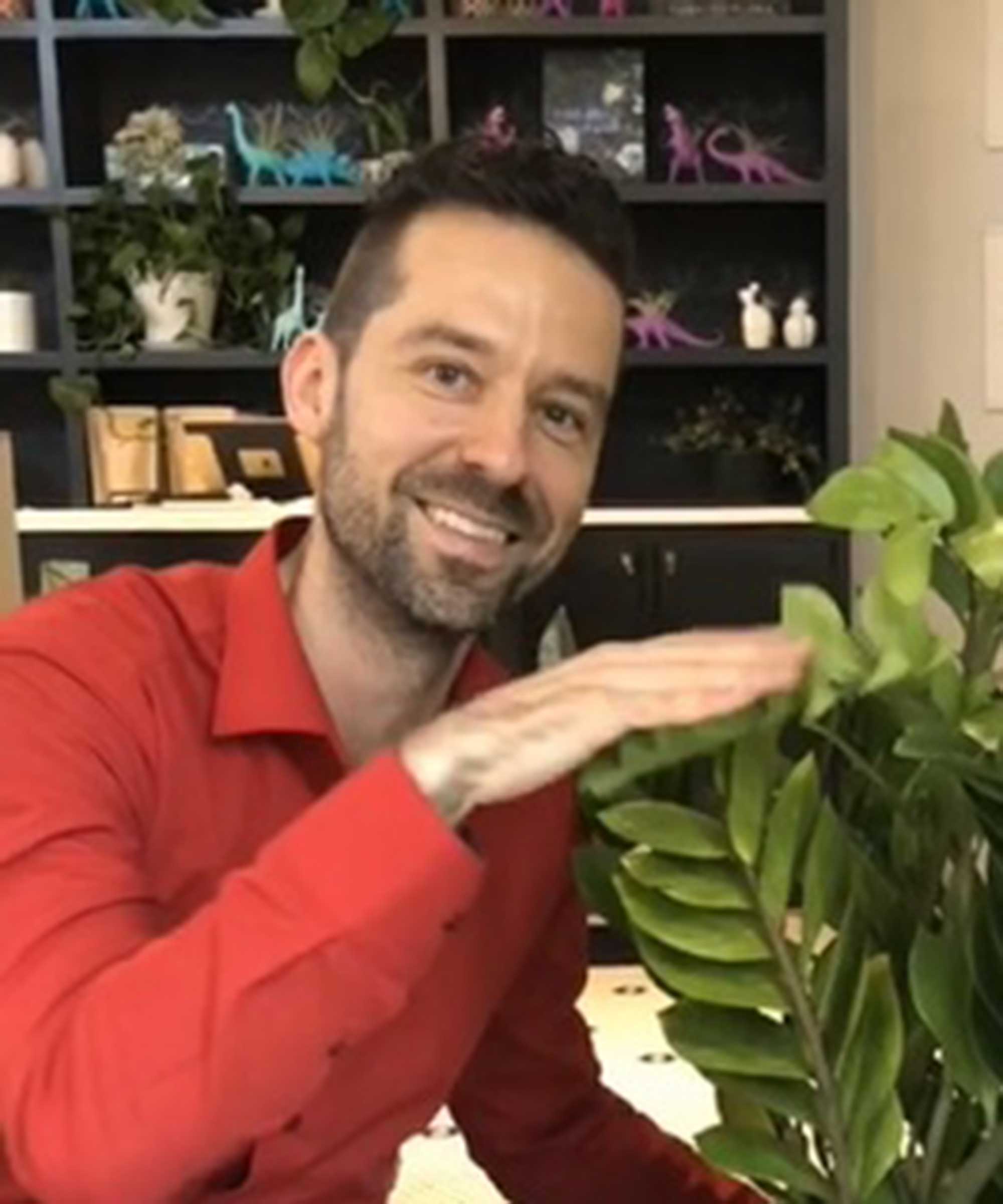How to care for a twisted lipstick plant – 3 top tips from houseplant experts
These trailing, tropical houseplants are easy to look after with this pro advice


The twisted lipstick plant is a type of Aeschynanthus – a genus of subtropical and tropical plants. Its name comes from its mass of tightly twisted foliage and red, tubular flowers. Planted in a hanging basket, it creates a stunning feature in the home.
While it may not be as well-known as other indoor flowering plants such as peace lilies or orchids, this unusual houseplant has a playful look and relatively easy-care nature that makes it worth considering for a beautiful, botanical vibe.
3 key tips for caring for your twisted lipstick plant
Below, the houseplant experts share their advice for caring for twisted lipstick plants in an indoor garden.
1. Use a suitable soil mix

These plants produce vibrant blooms
Kiersten Rankel, an expert from Greg, a plant-care app, says, 'The twisted lipstick plant thrives in an airy soil mix.
'Normal potting soil with a handful of orchid bark, perlite, or moss is perfect to retain moisture while allowing good drainage and airflow to the roots.'
For instance, you may wish to combine the well-rated organic potting soil mix from Espoma at Amazon with this organic perlite from Perfect Plants Nursery.

Kiersten Rankel is a certified Louisiana Master Naturalist and regularly volunteers with local community gardens and nonprofits to help restore critical ecosystems along the Gulf Coast. In her spare time, she enjoys hiking and tending to her 150+ houseplants and vegetable garden.
2. Keep moisture levels up

Don't let twisted lipstick plants dry out
Watering houseplants correctly is essential. Juliette Vassilkioti, the founder of My City Plants, recommends ensuring the soil is slightly moist for twisted lipstick plants. 'Water thoroughly when the soil is dry halfway down, but avoid letting it dry out completely,' she says.
Design expertise in your inbox – from inspiring decorating ideas and beautiful celebrity homes to practical gardening advice and shopping round-ups.
'Slow down on watering in darker winter months, and always make sure their pots have drainage,' says Kiersten. 'This will help you prevent overwatering and root rot.'
Nastya Vasylchyshyna, a resident botany expert at Plantum, says, 'The twisted lipstick plant thrives in above average humidity, so it may require misting if its growing environment is too dry.' Juliette says that placing a humidifier nearby will also help, as will putting a humidity tray filled with water and pebbles beneath the pot.
'During its active growing period (spring through summer), you can also occasionally give the plant a gentle shower instead of misting,' continues Nastya. 'This way, you'll be able to clean the foliage along with moisturizing it. To avoid overwatering the soil, shower the plant in place of one of its regular watering sessions.'

Juliette, a horticultural expert and plant educator, is the driving force behind My City Plants. Her goal is to transform lifeless office spaces into vibrant, green sanctuaries. She and her team are responsible for the health and growth of thousands of different types of plants, helping numerous New Yorkers establish a bond with nature.

Nastya is a professional botany expert for the Plantum app that helps identify plants and plant diseases and provides care recommendations. Her specialization is plant morphology, phytopathology, and plant physiology.
3. Choose the right location

The curly leaves are a distinctive feature of twisted lipstick plants
Juliette recommends placing these indoor plants in a spot where they can bask in bright, indirect light. 'An east-facing window with gentle morning sunlight is perfect.'
Avoid placing it in direct sunlight for prolonged periods in a south window, unless a sheer curtain is drawn or the plant is placed back a few feet, says Paris Lalicata from The Sill. 'If you don’t have enough natural lighting, try grow lights.'
In terms of warmth, Juliette recommends maintaining moderate temperatures between 60–75°F. In fact, low temperatures can lead to twisted lipstick plants dropping their leaves, as Nastya points out.
'Don't expose Aeschynanthus to cold drafts, and avoid placing it near constantly open windows, on the floor near any doors, or under an AC unit,' Nastya adds. 'Refrain from growing the plant near heaters as well, as they may induce the foliage to dry up and wrinkle by drying out the nearby air.'
FAQs
Can pests be a problem with twisted lipstick plants?
The tight curls of a twisted lipstick plant provide the perfect shelter for houseplant pests, says Kiersten Rankel, an expert from Greg, a plant-care app. 'Inspect the leaves regularly and watch for pests like spider mites that adore dry, heated environments.
'Early warning signs include delicate webbing on the underside of the leaves, sticky residue, or white fuzz. Gently wipe leaves with insecticidal soap if you notice any evidence of pests.'
The insecticidal soap from Bonide at Amazon is a well-rated option.
Should you prune a twisted lipstick plant?
Vladan Nikolic (Mr Houseplant) says, 'You can prune your lipstick plant’s stems after flowering to encourage new growth.' You should also prune the plant to remove all dead and diseased parts or dry leaves and stems, he says. 'Use sterilized pruning shears or scissors for pruning.'

Vladan Nikolic, otherwise known as Mr. Houseplant, is a houseplant expert with over 10 years of experience. He is the founder of the houseplant care blog MrHouseplant.com and also an influencer who helps newcomers in the houseplant world become great plant parents. You can find him on Instagram, TikTok, YouTube, Facebook, Twitter and Pinterest.
Why won't my twisted lipstick plant produce flowers?
This is a common issue with twisted lipstick plants, and can be caused by a variety of factors, says Nastya Vasylchyshyna, a resident botany expert at Plantum. Examples include insufficient soil nutrition, infrequent repotting or replacement of the potting mix, and lack of a period of dormancy.
'In order for your plant to begin developing flower buds, you'll need to move it into cooler conditions at the end of the active growing period,' she says.
On the lookout for more trailing plants for your home? Try growing pothos or philodendrons, too – both are excellent for hanging from the ceiling. Or, if you're really into curls and unusual shapes, you might be interested in knowing more about a frizzle sizzle plant.

Holly started writing about gardening five years ago, and she is a regular contributor to Homes & Gardens. She has also written many gardening features for Woman & Home and Real Homes, too. She has previous experience as a professional gardener, where she helped to plant and maintain private gardens. Holly has also looked after allotment plots over the years and loves to grow her own flowers and veggies from seed. In her spare time, she enjoys visiting local gardens, botanical drawing, and tending to her ever-growing collection of houseplants.